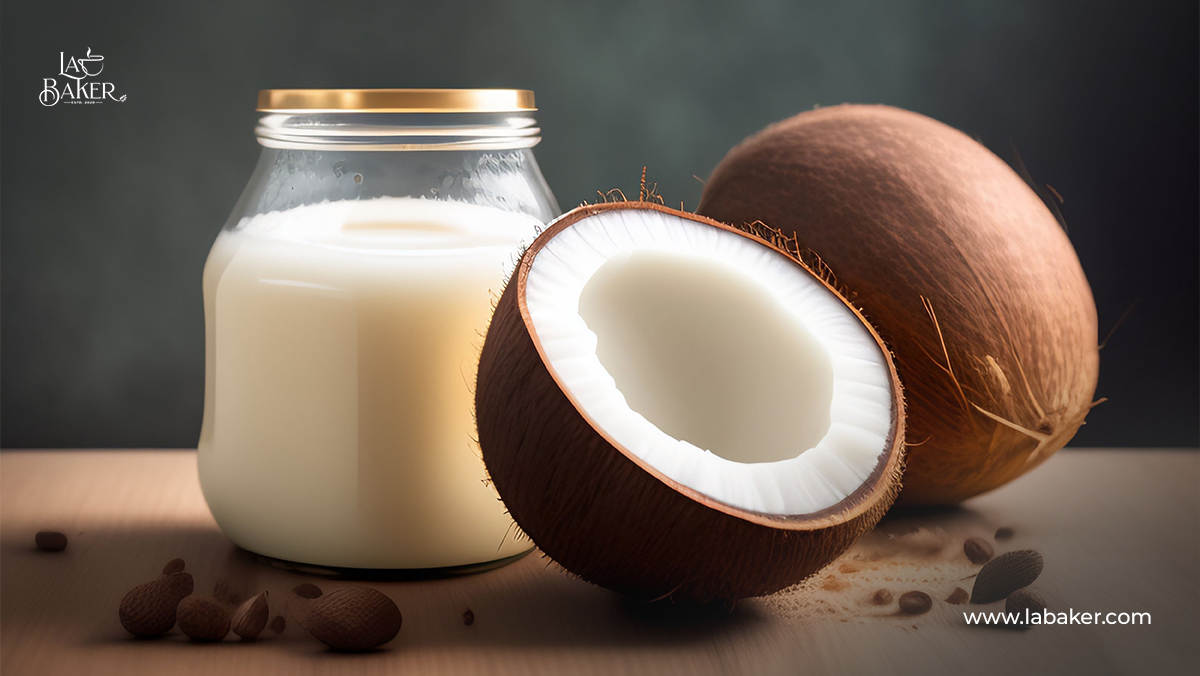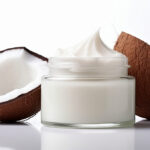
How to Properly Store Co...
Coconut cream, with its decadent and tropical flavor, is a versatile ingredient that can enhance a wide range of recipes. However, due to its relatively short shelf life, knowing the best practices for storing coconut cream is essential to ensure its freshness and quality. In this comprehensive guide, we will explore different methods for storing coconut cream, including refrigeration, freezing, and utilizing ice cube trays. We will also provide tips and recommendations to help you maximize the shelf life of your coconut cream.
Coconut cream, derived from the flesh of mature coconuts, is a rich and creamy ingredient that adds a tropical flair to both sweet and savory dishes. It is commonly used in recipes such as curries, desserts, smoothies, and cocktails. However, to fully enjoy the flavor and texture of coconut cream, it is important to store it properly.
Why Proper Storage is Important
Properly storing coconut cream is crucial for maintaining its freshness and quality. The correct storage methods can help prevent bacterial growth, maintain its creamy texture, and preserve its rich flavor. By following the recommended guidelines, you can extend the shelf life of your coconut cream and reduce food waste.
Choosing the Right Coconut Cream
When selecting coconut cream for storage, there are a few key factors to consider:
Expiration Date
Always check the expiration date on the packaging before purchasing coconut cream. Choose a product with a later expiration date to give yourself more time for storage.
Packaging Condition
Inspect the container for any signs of damage or leakage. Avoid purchasing coconut cream with a damaged or dented container, as it may indicate that the product has been compromised.
Brand Reputation
Opt for high-quality brands that are known for their commitment to quality. These brands often use fresher ingredients and have strict quality control measures in place.
Consistency
Coconut cream comes in various consistencies, ranging from thick and creamy to lighter and more liquid-like. Select the consistency that suits your preferences and fits your intended usage, keeping in mind that thicker coconut cream tends to store better.
Refrigerating Coconut Cream
Refrigeration is one of the most common methods for storing coconut cream. Follow these steps to refrigerate coconut cream properly:
Transfer the Coconut Cream
If the coconut cream comes in a can, transfer any unused portion to an airtight container. This helps preserve its freshness and prevents odors from seeping in.
Seal the Container
Ensure that the container is tightly sealed to prevent air from entering and compromising the quality of the coconut cream.
Label and Date
Label the container with the date of storage. This will help you keep track of its freshness and avoid using expired coconut cream.
Store in the Refrigerator
Place the container of coconut cream in the refrigerator, preferably on the top shelf where the temperature is most consistent. Avoid placing it near items with strong odors to prevent flavor transfer.
Check Periodically
Coconut cream can vary in consistency, so it’s important to check the stored cream periodically. If you notice any changes in color, texture, or smell, it may be an indication that the coconut cream has spoiled and should be discarded.
Refrigerated coconut cream can generally last for 3-5 days, depending on the product and storage conditions. However, please refer to the expiration date on the packaging as a general guideline for freshness. Refrigeration is not a long-term storage solution for coconut cream.
Freezing Coconut Cream
Freezing coconut cream is an excellent method for long-term storage. Follow these steps to freeze coconut cream properly:
Transfer and Portion the Coconut Cream
Pour the coconut cream into an airtight container or ice cube tray. If using a container, leave some headspace to allow for expansion during freezing. If using an ice cube tray, fill each compartment about 3/4 full.
Seal and Label
Ensure that the container or ice cube tray is tightly sealed to prevent air or moisture from entering. Label the container or tray with the date of freezing.
Freeze
Place the container or ice cube tray in the freezer. If using an ice cube tray, lay it flat to prevent spillage. Allow the coconut cream to freeze completely, which usually takes a few hours overnight.
Transfer to a Freezer-Safe Bag (Optional)
If you use an ice cube tray, once the coconut cream is frozen, you can transfer the individual cubes to a freezer-safe bag for better organization and space-saving.
Store in the Freezer
Place the sealed container or freezer bag in the freezer, preferably in the back where the temperature is most stable. Keep it away from ingredients with strong odors to prevent flavor absorption.
Thawing and Using Frozen Coconut Cream
When you need to use the frozen coconut cream, simply thaw it in the refrigerator overnight or microwave it on low power in short increments. Stir well before using.
When properly frozen, coconut cream can last for several months in the freezer. However, for the best flavor and texture, it is recommended to use it within 3 months.
Storing Coconut Cream in Ice Cube Trays
Using ice cube trays to store coconut cream can be a convenient option, especially if you often need small portions for recipes. Follow these steps to store coconut cream in ice cube trays:
Prepare the Ice Cube Trays
Clean the ice cube trays thoroughly and ensure they are dry before use.
Transfer the Coconut Cream
Pour the coconut cream into the compartments of the ice cube trays, filling them about 3/4 full.
Freeze
Place the ice cube trays in the freezer and allow the coconut cream to freeze completely.
Transfer to Freezer-Safe Bags (Optional)
Once the coconut cream cubes are frozen, you can transfer them to freezer-safe bags for better organization and space-saving.
Store in the Freezer
Place the sealed freezer bags containing the coconut cream cubes in the freezer, preferably in the back where the temperature is most stable.
Thawing and Using Coconut Cream Cubes
When you need to use coconut cream, simply remove the desired number of cubes from the freezer bag and thaw them in the refrigerator overnight or microwave them on low power in short increments. Stir well before using.
Storing coconut cream in ice cube trays allows for easy portioning and convenient usage, especially when recipes call for smaller quantities of coconut cream.
Tips for Properly Storing Coconut Cream
Here are some additional tips to help you store coconut cream properly and maintain its freshness:
Use Airtight Containers
Always use airtight containers or freezer bags to store coconut cream. This prevents air and moisture from entering, which can lead to spoilage.
Proper Labeling
Label containers or freezer bags with the date of storage to keep track of freshness and avoid using expired coconut cream.
Avoid Contamination
To prevent contamination, avoid dipping dirty utensils or fingers into the coconut cream. Bacteria from unclean surfaces can cause the cream to spoil faster.
Choose High-Quality Brands
Opt for reputable brands known for their commitment to quality. High-quality coconut cream tends to have a longer shelf life and superior taste.
Check for Spoilage
Regularly check the stored coconut cream for any changes in color, texture, or smell. If you notice any signs of spoilage, discard the cream immediately.
Use Proper Hygiene
When handling coconut cream, ensure that your hands and utensils are clean to prevent contamination and maintain its freshness.
Conclusion
Properly storing coconut cream is essential for maintaining its freshness and quality. Whether you choose to refrigerate or freeze it, following the recommended storage methods will help extend its shelf life and reduce food waste. By considering factors such as expiration dates, packaging condition, and brand reputation, you can select the best coconut cream for storage. With the tips and guidelines provided in this comprehensive guide, you can confidently store coconut cream and enjoy its creamy goodness in your favorite recipes for an extended period.
Frequently Asked Questions
1. Can coconut cream be stored at room temperature?
Coconut cream should be refrigerated after opening to maintain its freshness and prevent spoilage. Storing it at room temperature can lead to bacterial growth and a shorter shelf life.
2. Can I freeze coconut cream for a longer storage period?
Yes, you can freeze coconut cream to extend its shelf life. Freezing coconut cream can preserve its freshness for several months, allowing you to enjoy it at a later time.
3. Can I use frozen coconut cream directly in recipes?
When using frozen coconut cream, it is best to thaw it first. Thawing can be done in the refrigerator overnight or by microwaving it on low power in short increments. It is important to stir well before using to ensure a smooth consistency.
4. How long does coconut cream last in the refrigerator?
Coconut cream can generally last for 3-5 days in the refrigerator after opening. However, it is always best to check the expiration date on the packaging for specific guidance.
Sorry, the comment form is closed at this time.






